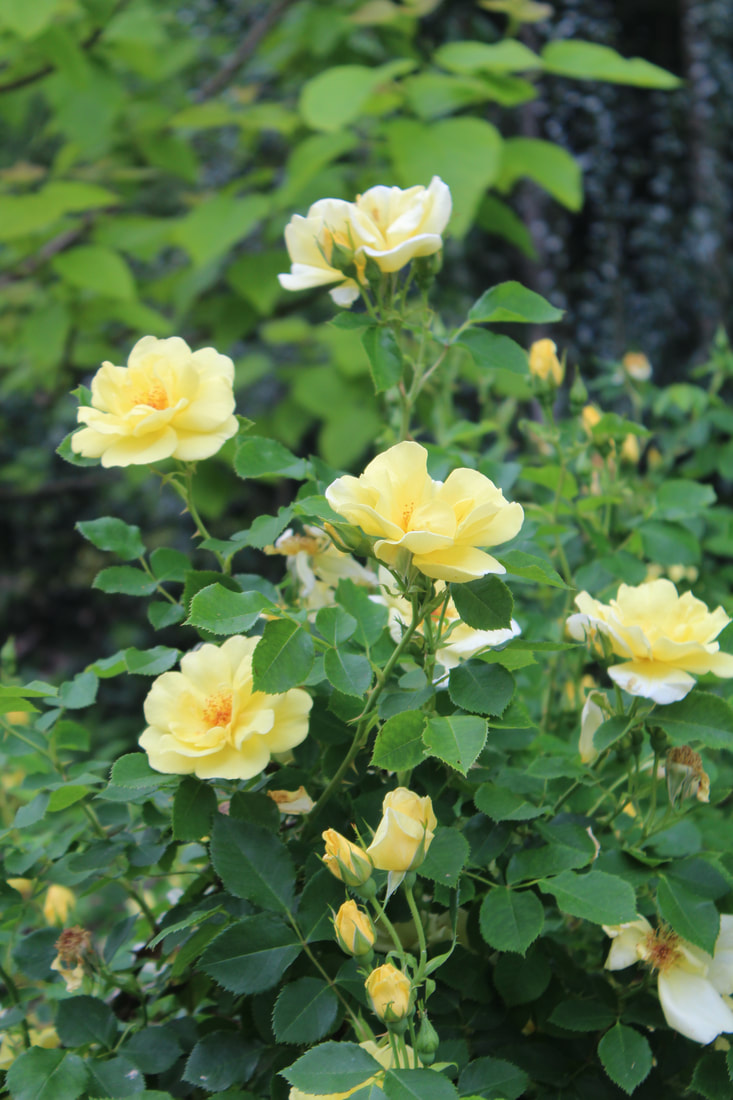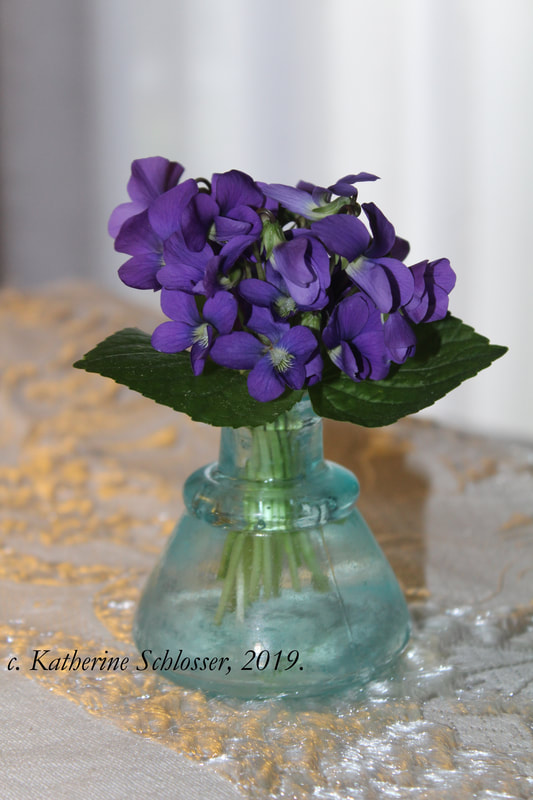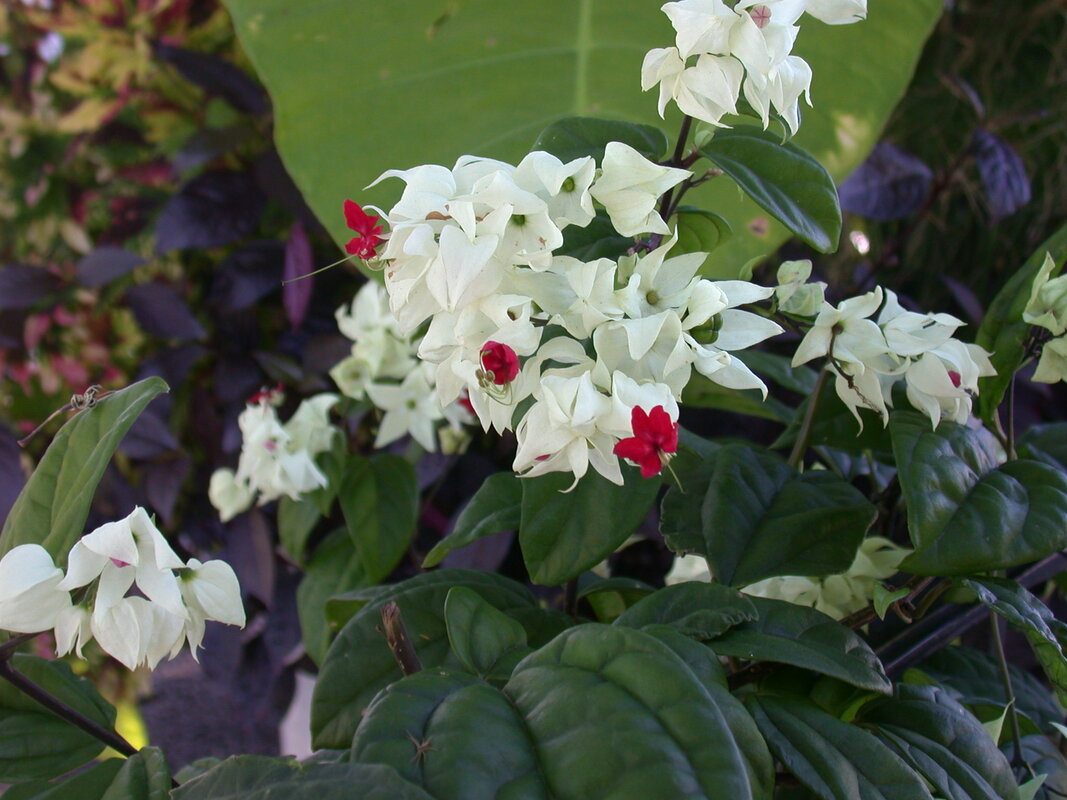“So many things make better progress in the cool of night,
or at its ending when the Dawn bedews the earth.”
From Virgil’s Georgics (29 BCE)
or at its ending when the Dawn bedews the earth.”
From Virgil’s Georgics (29 BCE)
WHAT WE DO...
The Herb Study Group takes on a wide variety of topics, from the history of women in the field of botany, landscape design, history of medicine with herbs, photographers and botanical illustrators, to in-depth study of individual herbs.
Meetings are informal and all members of the Unit are welcome to attend.
The Herb Study Group takes on a wide variety of topics, from the history of women in the field of botany, landscape design, history of medicine with herbs, photographers and botanical illustrators, to in-depth study of individual herbs.
Meetings are informal and all members of the Unit are welcome to attend.
|
In an Old Town Garden
by Lucy Maud Montgomery Shut from the clamor of the street By an old wall with lichen grown, It holds apart from jar and fret A peace and beauty all its own. The freshness of the springtime rains And dews of morning linger here; It holds the glow of summer noons And ripest twilights of the year. Above its bloom the evening stars Look down at closing of the day, And in its sweet and shady walks Winds spent with roaming love to stray, Upgathering to themselves the breath Of wide-blown roses white and red, The spice of musk and lavender Along its winding alleys shed. Outside are shadeless, troubled streets And souls that quest for gold and gain, Lips that have long forgot to smile And hearts that burn and ache with pain. But here is all the sweet of dreams, The grace of prayer, the boon of rest, The spirit of old songs and loves Dwells in this garden blossom-blest. Here would I linger for a space, And walk herein with memory; The world will pass me as it may And hope will minister to me. |
Anise hyssop (Agastache foeniculum)
ag-ah-STAK-ee foe-NIK-yew-lum Family: Lamiaceae Genus: Agastache There are sixteen species of Agastache native to the U.S., many of which are anise-scented, or more correctly, tarragon-like and some of which had medicinal or flavoring uses, including A. foeniculum. It was used as a breath freshener, cough medicine, and as a natural sweetener. There is no anethole in Agastache. Instead, its essential oils include estragole, germacrene, limonene, and ocimene, making the fragrance more reminiscent of basil or tarragon than of anise. This is a classic perennial plant for herb gardens, and is one of the herbs that made its way from North America to the European continent. It adds structure and a bit of elegance to borders, especially at the back of gardens. The plant grows from 3 to 5 feet tall and about 18 inches wide. The flower spikes are usually no more than 5-6” long. The flowers are attractive to bees, butterflies, and hummingbirds. Anise hyssop re-seeds freely, forming attractive clumps of flowering stems that bloom from summer into fall. Full sun and moist to dry, well-drained soil will produce healthy plants. Plants without sufficient sun may develop a little mildew, much as does Monarda. Clumps may be divided in spring, or seedlings transplanted. The individual flowers are edible and attractive sprinkled onto green salads, fresh fruit dishes, and in cold beverages. Most of the essential oils are in the leaves, which make a nice tea when young: steep 1 tablespoon of fresh, young or 1 teaspoon of dried herb in a mug of freshly boiled water for 5 minutes for a slightly sedating and tranquilizing, minty-licorice tea. Try creaming young, chopped leaves with honey and unsalted butter to serve on scones or toast. Use young leaves to flavor lemonade. Add leaves and flowers to salads. Sometimes confused with Hyssop, Hyssopus officinalis, which has a slight mint fragrance and bitter, peppery leaves. It has narrow leaves, very unlike Agastache, have been substituted for sage, and sometimes added to bouquet garni. Better as a savory herb. Hyssop is often included in Chartreuse, thought Agastache often, mistakenly, gets that credit. |
Lunch at Neomonde Restaurant in Raleigh, just down the street from the Arboretum, gave us lots of ideas for using herbs in the kitchen. Photo: a customer kindly took the photo
Herbs are those plants which are rich in essential oils as manifested in their fragrance and flavor and which have been cherished by mankind for centuries as useful in the household for perfume, cookery, and medicine.
Rosetta E. Clarkson, Magic Fragrance, 1937
|
Tea Tasting
In March we tasted four teas (from The Extra Ingredient in Greensboro, NC.), selecting our favorites. Ceylon and Assam were preferred by most, but some are die-hard Earl Grey fans and some love Lapsang souchong (which can also be used in cooking!). Ceylon A black tea primarily from Sri Lanka. Bold, Brisk with medium to full tannins. Notes of citrus, chocolate and spice. Used in wine as well as tea. Lapsang souchong A black tea from China. Rich with a smoky flavor.. Smoke-dried over pinewood fires. One of the oldest methods of preparing tea. Also used as a flavoring in savory dishes. Assam A black tea primarily from India (Camellia sinensis var. assamica). Brisk & Bright—often used as a breakfast tea. Introduced to Europe by Robert Bruce in the early 1800s. Used in wine as well as tea. Earl Grey A black tea blended with oil of bergamot orange. Bold and smooth. Presented to Earl Grey on his return from China in 1803. Also used as a flavoring in sweet and savory dishes |
Few flowers can match the fragrance of Antique roses.
This is our common blue violet, Viola sororia. It also appears with a white flower, and white with purple stripes. It is not fragrant. For fragrance, you must have Viola odorata which is not native here, but can be found in some nurseries.
|
Porophyllum ruderale, Papalo or Yerba porosa. Strongly scented leaves are used fresh in salsa, soups,stews, beans, and in salads much as is cilantro. The leaves are not cooked, but can be added at the end of cooking to hot dishes. Native to North and South America. Annual.
Photos: Katherine Schlosser
Photos: Katherine Schlosser
Salvia cacaliifolia. Guatemalean leaf sage or Blue vine sage. Clump forming perennial native to Mexico, Guatemala, and Honduras.
Clerodendrum thomsoniae, Bleeding heart vine. A beautiful vine growing to 12 feet. Native to West Africa. Toxic to animals and humans, but pretty in the garden.
Photos: Katherine Schlosser
Photos: Katherine Schlosser
We Would Love to Have You Visit!
|
|
LIMITED Permission to Use Materials
The right to download and store or output the materials on our website is granted for the user's personal educational use only. Materials are copyrighted may not be edited, reproduced, transmitted or displayed by any means mechanical or electronic without our express written permission. Users wishing to obtain permission to reprint or reproduce any materials appearing on this site may contact us using the Contact Form. If granted, we will email you a written permission for you to keep on file. We respond quickly to such requests. |
ASSOCIATION
The North Carolina Unit is a member of the Herb Society of America, Inc. Visit the national organization at www.herbsociety.org |










